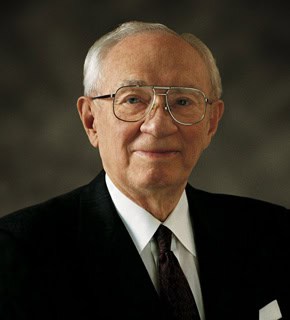Perpetual Emigration Fund
SEARCH BY TITLE
 The Perpetual Education Fund
The Perpetual Education Fund
I begin by taking you back 150 years and more. In 1849 our forebears faced a serious problem. Our people had then been in the Salt Lake Valley for two years. Missionaries in the British Isles and Europe continued to gather converts. They came into the Church by the hundreds. When they were baptized, they desired to gather to Zion. Their strength and their skills were needed here, and their wish to come was very strong. But many of them were distressingly poor, and they had no money with which to buy passage. How were they to get here? Under the inspiration of the Lord, a plan was devised. What was known as the Perpetual Emigration Fund was established. Under this plan, funded by the Church, notwithstanding its serious poverty at that time, money was loaned to those members who had little or nothing. Loans were made with the understanding that when the converts arrived here, they would find employment, and as they were able to do so, they would pay off the loan. The money repaid would then be loaned to others to make it possible for them to emigrate. It was a revolving resource. It was truly a Perpetual Emigration Fund. With the help of this fund, it is estimated that some 30,000 converts to the Church were enabled to gather to Zion. They became a great strength to the work here. Some of them came with needed skills, such as stone masonry, and others developed skills. They were able to perform a tremendous service in constructing buildings, including the Salt Lake Temple and Tabernacle, and doing other work which required expertise. They came here by wagons and by handcarts. Notwithstanding the terrible handcart tragedy of 1856, when approximately 200 of them died from cold and sickness on the plains of Wyoming, they traveled safely and became an important part of the family of the Church in these mountain valleys. For instance, James Moyle was a stonecutter in Plymouth, England, when he was baptized at the age of 17. Of that occasion he wrote: “I then covenanted with the Lord that I would serve Him through good and evil report. It was the turning point in my life, as it kept me from evil company”. Notwithstanding his skill as a mason, he had little money. He borrowed from the Perpetual Emigration Fund and left England in 1854, sailed to America, crossed the plains, and almost immediately secured employment as a stonemason on the Lion House at $3 a day. He saved his money, and when he had $70, the amount of his indebtedness, he promptly repaid the Emigration Fund. He said, “I then considered that I was a free man”. When the Perpetual Emigration Fund was no longer needed, it was dissolved. I believe that many within the sound of my voice are descendants of those who were blessed by reason of this fund. You are today prosperous and secure because of what was done for your forebears.
